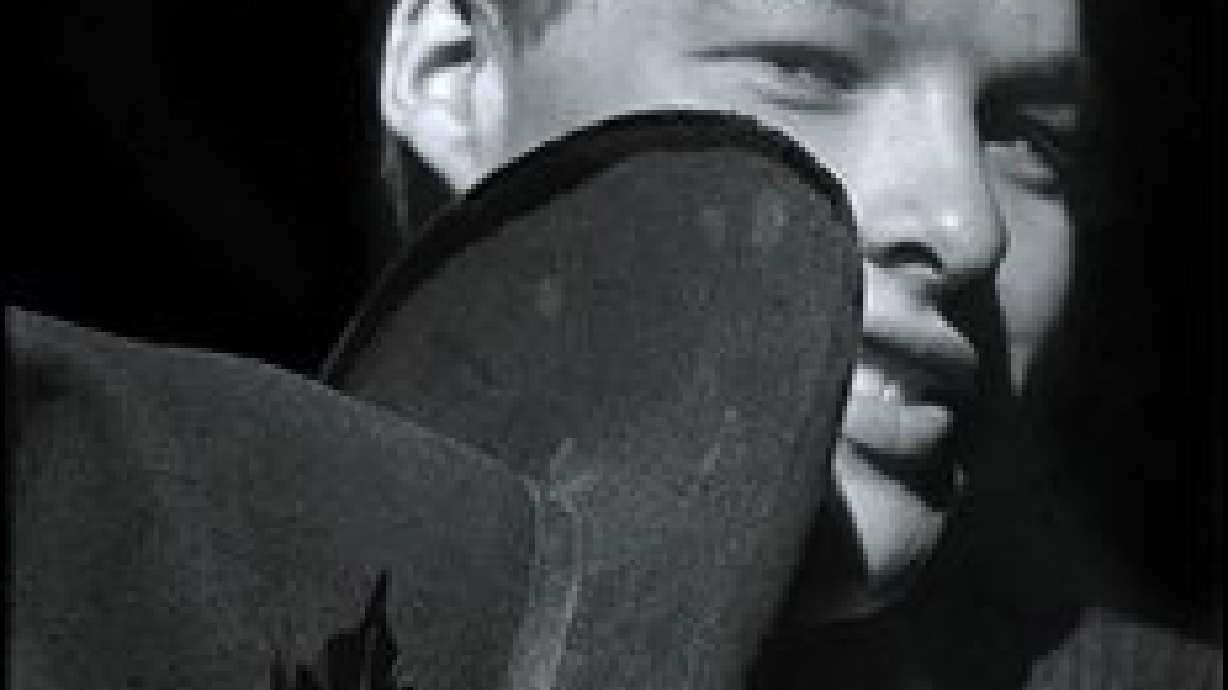Estimated read time: 3-4 minutes
This archived news story is available only for your personal, non-commercial use. Information in the story may be outdated or superseded by additional information. Reading or replaying the story in its archived form does not constitute a republication of the story.
SALT LAKE CITY (AP) -- A skeleton found in the Utah wilderness last year was not that of Everett Ruess, a legendary wanderer of the 1930s, despite initial forensic tests that seemed to have solved an enduring mystery, his nephew told The Associated Press.
"The skeleton is not related to us," Brian Ruess, a 44-year-old software salesman in Portland, Ore., said late Wednesday.
Everett Ruess vanished in southern Utah in 1934, writing in a final letter to his family in California that "as to when I revisit civilization, it will not be soon" and "it is enough that I am surrounded with beauty."
He was 20 and a gifted poet who explored the Southwest over much of four years. In between journeys, he hobnobbed with famous artists of his time.
Initial DNA tests were termed "irrefutable" months ago by University of Colorado researchers, but one of them said Wednesday he accepted as final the new results from the Armed Forces DNA Identification Laboratory in Rockville, Md.
Utah's state archaeologist, Kevin Jones, had questioned the original results, prompting the family to seek a second opinion.
Jones said a recovered lower jawbone was characteristic of an American Indian's, not a man of European descent, and that worn teeth suggested a lifetime diet of coarse grains. It's not known whose remains were actually found.
"It's what we expected," Jones said Wednesday of results disputing the find. "That was why we raised the questions -- we thought there were problems. I'm delighted at the courage of the family to pursue additional analysis about the identify of their ancestor."
The first forensic results -- combined with a recently disclosed Navajo tale of murder -- seemed to make a powerful case that Ruess' body had been discovered, as recounted in the magazine National Geographic Adventure.
A contributing editor of the magazine, David Roberts, encountered what he called a surprising backlash and even threats after writing the story last spring, but not on scientific grounds. Rather, the legend of Everett Ruess -- long a figure of American West lore -- provoked strong emotions.
Robert's discovery began with the haunting account of a Navajo elder who, according to a family story, had witnessed the young man's murder by other Indians and waited decades to reveal a burial spot.
Brian Ruess said that part of the story may still be true.
"It might mean there's a skeleton out there, but this isn't the right one. It just means there's a lot of graves out there," he said.
Ruess' supposed remains were found stuffed in a rock crevice against a cliff wall at remote Comb Ridge in southeastern Utah, about 60 miles from Escalante, the town where he set off for his final wilderness journey.
Brian Ruess said he accepts the analysis of the Armed Forces Institute of Pathology lab as a pre-eminent authority on DNA testing. Jones believes the first researchers mixed DNA from Ruess' four nephews and nieces with that of the discovered bones, contaminating the results.
University of Colorado biologist Kenneth Krauter, who handled the initial DNA tests, said he did a second round of tests that disproved his original results, but wasn't able to determine how he made a mistake in the first place. He called the Armed Forces results definitive.
"I'm convinced it's extremely unlikely these are the remains of Everett Ruess," Krauter said. "I feel badly for making my judgment in the first place, but it's science, and it's difficult."
Krauter didn't say why he didn't acknowledge his mistake earlier, but said he had strongly urged the family to get a second opinion.
There was no immediate response from National Geographic Adventure editors. Weeks ago, Roberts said he was fully preoccupied trying to reconcile doubts about the discovery. He could not be immediately reached late Wednesday.
The back-and-forth was jarring to the artists' only surviving family members.
"It is an up and a down, and certain members of the family would have really liked closure," Brian Ruess told The AP. "It's an emotional tug one way, and then a tug back the other way."
(Copyright 2009 by The Associated Press. All Rights Reserved.)









